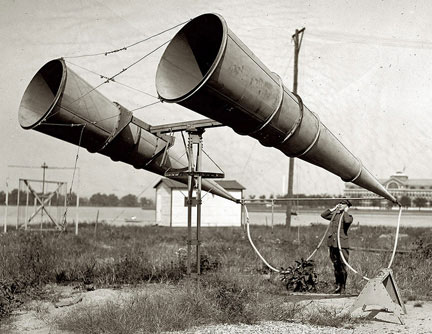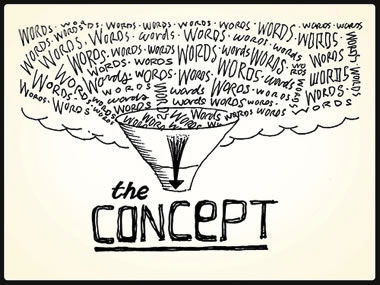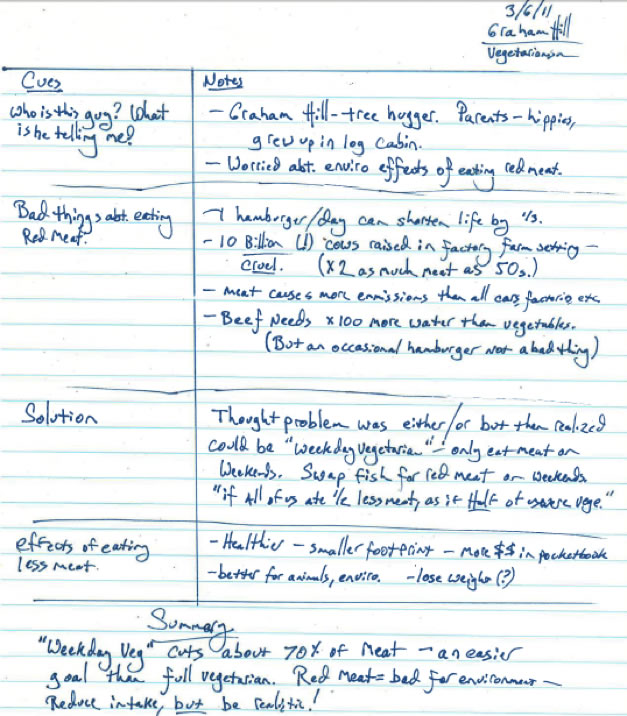Introduction

There’s an old saying: “We were given two ears and one mouth for a reason. Listening is twice as important as talking.” That’s especially true in school; just ask any of your teachers! Listening effectively can also be twice as hard as talking. Learning new things requires reading and listening to sometimes challenging content, with words and concepts completely unfamiliar to you. As you complete high school and go on to college, listening effectively will be more important than ever before. In college, you might take classes in large halls with more than one hundred other students. Your professors won’t have the time to stop and answer every question that comes up, but they will take the time to periodically ask for questions. You will need to know how to keep track of the questions you have without missing parts of the lecture. Also, some professors test partially or sometimes wholly on content from their lectures, so in order to get a good grade you’ll need listen carefully and take notes effectively.
The importance of listening doesn’t end with school, of course. In the workplace, your boss will not be sympathetic when you miss important information in a meeting because you were looking out the window.
In this lesson we will learn how to listen effectively, take good notes, and ask critical questions.
Instructions for Using the Take Notes Tool
- Click the Take Notes button in the left Epsilen navigation menu to open the Take Notes popup page.
- You may edit the Title or leave it as the title of the course.
- Enter your notes in the Content box.
- Click the Save button. You may now refer to these notes whenever you open the Take Notes popup page.
Listening Effectively
 Image © 2008 by Juston Tippins
Image © 2008 by Juston TippinsYou’re in class, and your teacher is standing at the front talking. Suddenly you hear her say, “ . . . and those are the three most important things you’ll need to study for the test tomorrow.” What? You look down at your notes, and all you see is a blank page. Your attention wandered during the lecture, and you missed crucial information. This happens to everyone sometimes, but the consequences aren’t always so dire. Wouldn’t you like to be in better control of your attention span for listening? Here are some tips to help you achieve this.
Strategies for Effective Listening
- Maintain eye contact with the speaker. You will need to look at your notes from time to time, but eye contact will keep you focused on the task of listening.
- Focus on content and not delivery. Don’t count the number of times a speaker says, “Um” or “Uh,” or wonder why he doesn’t pronounce the letter “h” in the word “human.” If you do this, you’ll miss important information.
- Listen with an open mind. Avoid becoming emotionally involved with what you are hearing. When people get angry or agitated by what they are hear, they tend to shut out the speaker’s message and focus on a rebuttal instead.
- Minimize distractions. Don’t sit near a window if you are easily distracted by the outside view. Bring a sweater if you get cold easily. Ignore page shuffling or whispering from the person sitting next to you.
- Don’t interrupt. Be respectful, especially if you disagree with the speaker. Wait for the speaker to ask for questions.
- Sit where you can hear and see the speaker. Arrive early so you can choose where to sit. Sit near the front if you can. If your instructor assigns seats, and you find you have trouble hearing or seeing, ask for a new seat after class.
- Use the gap between the rate of speech and your rate of thought. You can think faster than the speaker can talk; that’s one of the challenges of being a good listener. Mentally summarize the speaker’s main points, anticipate what the speaker will say next, evaluate the evidence the speaker is giving, and write down questions for later.
Here’s a short quiz so you can check what you’ve learned about listening.
Taking Effective Notes
 Image © by Mike Rohde
Image © by Mike Rohde
Since you have been taking notes in school for many years now, you might wonder, “What else is there to know about it?” Ask yourself these questions to determine if you are taking the most effective notes:
- Do you try to capture every word your teacher says and sometimes find that you’ve missed part of the lecture?
- Do you ever look back at your notes and wonder why you thought something was important enough to write down?
Anyone who can write can take notes, but taking effective notes is an important skill that takes practice. In this section we will discuss a few strategies for taking effective notes.
Strategies for Effective Note Taking
- Be prepared.
- Read assigned materials before class (readings assigned in advance are intended to provide context for or be relevant to the lecture).
- Look up unfamiliar vocabulary and make notes about things that you do not understand.
- Have your supplies ready. Be sure you have your notebook, pen or pencil, highlighters, or fully charged laptop.
- Review and edit your notes as soon as you can after class, preferably within 24 hours. Your memory can begin to fade if you wait longer, and it might not be possible to recall the context in which you wrote something.
- Rewrite illegible handwriting and correct spelling errors in your notes.
- Highlight concepts you don’t understand so that you can ask your instructor.
Distinguishing Important Information from Unimportant Information
- Identify keywords.
- Content keywords (or content vocabulary) are words related to your subject. While reading your class assignments, content keywords often appear in bold or italics.
- Directional keywords are words that signify actions you should take. These are words such as “turn to page” or “assignment due.”
- Clue words are words that tell you important information is coming. These are words like “most importantly,” advantages,“ “disadvantages,” “types,” “in addition to,” “tips,” “strategies,” “guidelines,” and “reasons.”
- Identify key points.
- Key points in a lecture are the main topics of the lecture that often correspond to chapter headings from your reading.
- When you are discussing literature, such as novels or short stories, there won’t be chapter headings as there are in a psychology textbook. These key points often correlate to literary terms, which you might have identified as keywords. These are words such as: “character,” “plot development,” setting,” “tone,” and “mood.”
- Identify multimedia enhancements.
- Describe any images shown.
- Describe any sound or video files.
- Identify cues and clues.
- Listen for changes in the instructor’s voice. Often the instructor will speak louder and slower when presenting important information.
- Pay close attention to anything written on the blackboard or overhead projector.
- Watch the instructor’s movements. Does she move from behind the podium or stand up?
What to Write
Although most speakers speak more slowly than you can write, you still need to write quickly so that you don’t get lost.
Tips
- Write major points toward the left of the paper and indent sub-points.
- Use sentence fragments and omit unnecessary words such as “the.”
- Forget about spelling (unless it is a technical term written on board or overhead). You can correct any spelling errors when you review your notes afterward.
- Write everything the instructor writes, even if you think you can remember without writing it down.
- Skip lines (make sure you have plenty of paper).
- Abbreviate when possible. Here are some abbreviations you can use.
Word |
Abbreviation |
Example |
Ex. |
At |
@ |
and |
& |
With |
w/ |
Without |
w/o |
Before |
b/4 |
Because |
b/c |
Including |
Incl. |
Information |
Info. |
Possible/possibly |
Poss. |
Probably |
Prob. |
Problems |
Probs. |
You can come up with other abbreviations, such as text messaging and chat abbreviations, or search the Internet for abbreviation systems such as shorthand.
The Cornell Method of Note Taking
The Cornell Method of note taking was developed by a professor at Cornell University. With this method, you divide an 8 ½ by 11 sheet of paper (regular notebook paper) into two columns, leaving about five lines at the end of the page. The left is approximately 2 ½ inches. The right is six inches.
Label the left column: Cues. You will use this column after the lecture is over.
Label the right column: Notes. This is where you will record your notes.
Label the bottom: Summary.
Cues |
Notes |
Directly after class, write questions or key points related to the notes here. |
Record main ideas and concepts here. Use concise sentences, bullet points, and abbreviations.
Skip a couple of lines between each point.
|
Summary |
|
When you study with these notes, cover the “Notes” column with your hand or another piece of paper and try to answer the questions from the “Cue” column. Use the “Summary” section to determine what is on each page without reading the entire page. Here is an example of notes on the previous section using the Cornell Method.
Cues |
Notes |
Listening vs. speaking |
Effective listening is harder than speaking. |
|
|
Tips for listening |
Make eye contact |
|
|
How do I use the gap between listening and speaking? |
Speakers think more slowly than listeners. |
Summary |
|
Your Turn, Listening and Taking Notes
In this section, you’ll watch a video of a TED Talk with Graham Hill.
While you are watching the video, you should have a piece of paper and pencil with you so that you can take notes. Then, using the Take Notes Tool , write your responses to the questions below. Base your answers on the notes you took while watching the video. When you are finished, check your understanding.
- What is this talk about?
- Why does the speaker think eating factory-farmed meat is hypocritical?
- Why was Graham Hill surprised that he wasn’t a vegetarian?
- How much water does beef production use?
- How much more meat do we eat than we did in the 1950s?
- What is Graham Hill’s “third solution”?
- What should you eat instead of red or processed meats?
- List three reasons to become a “weekday veg.”
First, take a look at my notes. I used two methods to write what I heard.
- weekday vegetarian
- why am i not a vegetarian?
- Treehugger website
- burger/day incr. risk of dying by 1/3
- hypocritical factory farm conditions not safe for pets
- meat:
- beef production:
- 2x meat as 50s
- binary solution either/or
- 3rd solution?
- cut red and processed meats
- okay to break it
- 70% cut of meat
- better about animals
- healthier
- Why veg?
- planet
- animals
- 1/2 of us ate 1/2 as much meat, same effect as if 1/2 are vegetarians
-more emissions than all transpo. combined
100x water than most veg
good sense in conflict with tastes
later never came
-weekday veg
-nothing with a face m-f
-enviro damage
-sustainable fish
-lost weight
-will live longer
-health
-pocketbook
Here are the notes I took using the Cornell method.

Here are my responses to the questions about the video:
- Becoming a weekday vegetarian
- The animals live in conditions we wouldn’t subject our pets to.
- He was raised by hippie parents; started Treehugger.com
- 100 times as much water as most vegetables
- We eat twice as much meat as we did in the 1950s.
- Be a vegetarian during the week; eat meat on weekends if you want.
- Sustainable fish.
- Be healthier, save money, save the planet.
Resources
Resources Used in this Lesson: Bibliography
Hill, Graham. “Why I’m a Weekday Vegetarian.” Filmed February 2010.TED video, 4:04. Posted May 2010.
“The Cornell Note-Taking Method,” Temple University.